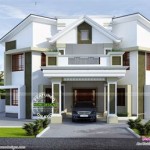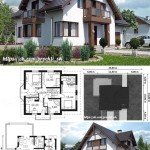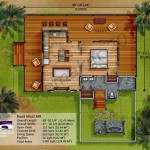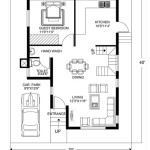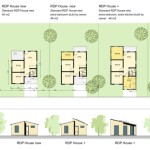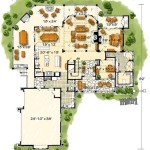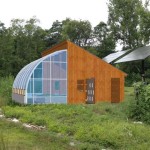3 Bedroom House Plans With Cost To Build In Kenya
The design and construction of a 3-bedroom house in Kenya require careful planning, budgeting, and execution. This article provides a comprehensive overview of 3-bedroom house plans suitable for the Kenyan market, along with an estimation of the associated construction costs. The information presented herein aims to serve as a practical guide for prospective homeowners seeking to build a comfortable and functional residence within a reasonable budget.
The popularity of 3-bedroom houses in Kenya stems from their suitability for small to medium-sized families. They offer a balance between affordability and adequate living space, making them a desirable choice for many Kenyans. Various factors influence the overall cost, including the design complexity, material choices, location of the building site, and labor expenses. It is important to consider these factors when embarking on a construction project.
Factors Influencing the Cost of Building a 3-Bedroom House in Kenya
The total cost of building a 3-bedroom house in Kenya is affected by several critical factors. Understanding these factors is crucial for accurate budgeting and cost management. These factors range from the land itself to the interior finishes selected.
Land Acquisition: The cost of land is often the most significant single expense. Land prices vary dramatically depending on the location and proximity to urban centers. Land in Nairobi, Mombasa, and other major towns is significantly more expensive than in rural areas. The size and topography of the plot also influence the price. A sloped plot, for example, may require additional excavation and retaining walls, increasing construction costs.
Design and Architectural Fees: Engaging a qualified architect or structural engineer is essential for creating a safe, functional, and aesthetically pleasing design. Architectural fees typically range from 5% to 10% of the total construction cost. The design should comply with local building codes and regulations. The complexity of the design also impacts the architectural fees. A simple, rectangular design will generally be less expensive than a complex, multi-level design.
Building Materials: The choice of building materials significantly affects the overall cost. Common building materials in Kenya include cement blocks, bricks, stone, and timber. The prices of these materials fluctuate based on market conditions. Importing specialized materials, such as certain types of roofing tiles or windows, can substantially increase costs. Locally sourced materials are generally more affordable and readily available.
Labor Costs: Labor costs constitute a significant portion of the construction budget. Skilled labor, such as masons, carpenters, plumbers, and electricians, commands higher wages. The availability of skilled labor in the area also influences the cost. In urban areas, labor costs are typically higher than in rural areas. The complexity of the design also affects labor costs. A more intricate design requires more skilled labor and time to complete.
Finishes and Fittings: The choice of finishes and fittings, such as flooring, sanitary ware, kitchen cabinets, and lighting fixtures, greatly impacts the final cost. High-end finishes and imported fixtures can significantly increase the budget. Opting for locally sourced, cost-effective alternatives can help to reduce expenses. The type of materials used for finishes (tiles versus vinyl flooring, for example) and the brand of fittings chosen can create substantial differences in the overall cost.
Infrastructure and Utilities: The availability and cost of infrastructure and utilities, such as water, electricity, and sewage disposal, impact the overall budget. Connecting to the main grid can be expensive, particularly in remote areas. Installing alternative energy sources, such as solar panels, may require a significant upfront investment. Septic tanks are often necessary in areas without access to a centralized sewage system. These additional costs must be factored into the overall project budget.
Permits and Approvals: Obtaining the necessary building permits and approvals from local authorities is a mandatory requirement and incurs associated costs. These permits ensure that the construction complies with safety and environmental regulations. The cost of permits varies depending on the county and the size of the project. Delays in obtaining permits can lead to increased costs due to project delays.
Sample 3-Bedroom House Plans Suitable for Kenya
Several 3-bedroom house plans are well-suited for the Kenyan market, catering to different family sizes and preferences. These plans range from simple, minimalist designs to more elaborate, multi-story structures. The following are a few examples of commonly used plans:
Bungalow Design: A bungalow is a single-story house, often characterized by a low-pitched roof and wide eaves. Bungalows are popular in Kenya due to their affordability and ease of construction. A 3-bedroom bungalow typically includes a master bedroom with an en-suite bathroom, two additional bedrooms, a shared bathroom, a living room, a dining area, and a kitchen. The design can be customized to include a veranda or a small garden.
Maisonette Design: A maisonette is a two-story house, offering more living space within a smaller footprint. A 3-bedroom maisonette typically has the living areas and kitchen on the ground floor and the bedrooms on the upper floor. This design is ideal for maximizing land usage in urban areas. The staircase design can significantly impact the aesthetics and functionality of the house.
Ranch-Style Design: A ranch-style house is a single-story house characterized by a long, low profile and an open floor plan. This design is well-suited for larger plots of land. A 3-bedroom ranch-style house typically features a spacious living room, a large kitchen, and a dedicated dining area. The design often incorporates large windows to allow ample natural light.
Apartment Style Design: While not a standalone house, apartment-style 3-bedroom units are popular in urban areas. These units typically feature a compact design with optimized space utilization. The design often incorporates modern amenities, such as balconies and shared recreational areas.
Each of these designs can be customized to suit individual preferences and budget constraints. Considerations such as the orientation of the house to maximize natural light and ventilation, as well as the incorporation of sustainable design elements, should be taken into account.
Estimated Cost of Building a 3-Bedroom House in Kenya
Providing an exact cost to build a 3-bedroom house in Kenya is difficult without specific details about the design, materials, and location. However, a general estimate can be provided based on prevailing market rates. These estimates are subject to change based on fluctuations in material prices and labor costs.
Low-Cost Option: A low-cost 3-bedroom house, using basic materials and a simple design, can be built for approximately KES 2,500,000 to KES 3,500,000. This estimate assumes the use of locally sourced materials, such as cement blocks and corrugated iron sheets for roofing. The finishes and fittings would be basic but functional. This range typically includes labor costs but may exclude the cost of land.
Mid-Range Option: A mid-range 3-bedroom house, using quality materials and a more refined design, can be built for approximately KES 4,000,000 to KES 6,000,000. This estimate assumes the use of bricks or stone for construction, tiles for roofing, and standard finishes and fittings. The design may include features such as a veranda, a garden, and customized kitchen cabinets. This range includes labor costs but typically excludes land costs.
High-End Option: A high-end 3-bedroom house, using premium materials and a sophisticated design, can cost KES 7,000,000 or more. This estimate assumes the use of imported materials, high-end finishes, and custom-designed features. The design may include amenities such as a swimming pool, a home theater, and smart home technology. This range covers labor costs but excludes the cost of land.
These estimates are indicative and should be used as a starting point for budgeting. It is highly recommended to obtain detailed quotations from contractors and suppliers to arrive at a more accurate cost estimate. Contingency funds, typically 10% to 15% of the total budget, should be set aside to cover unforeseen expenses.
The cost per square meter of building a house in Kenya typically ranges from KES 40,000 to KES 70,000, depending on the level of finishes and materials used. A 3-bedroom house typically covers an area of 80 to 120 square meters, influencing the final cost.

3 Bedroom House Plan A001 Plans Design Kenya

3 Bedroom House Plans And Cost In Kenya 2024 Urban Rural Rates To Co Ke

3 Bedroom House Plans And Cost In Kenya 2024 Urban Rural Rates To Co Ke

House Plans Kenya Affordable Bungalow Style Smart

House Plans In Kenya The Concise 3 Bedroom Bungalow Plan David Chola Architect

House Plans In Kenya The Budget 3 Bedroom Bungalow Plan David Chola Architect

3 Bedroom Bungalow Muthurwa Com House Plans Cost Design

3 Bedroom House Plan A005 Plans Design Kenya

Simple 3 Bedroom House Plan For A Small Family In Kenya Muthurwa Com

3 Bedroom House Plans And Cost In Kenya 2024 Urban Rural Rates To Co Ke

